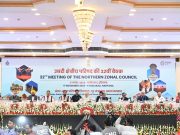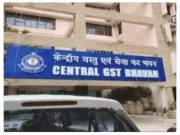Bhagwant Mann government opens export route, farmers’ profit increases 5 times
Punjab E News: Under Bhagwant Mann’s leadership, the Punjab government has achieved a historic milestone in litchi production and export, leading to a massive increase in farmers’ income. In 2023-24, the state produced 71,490 metric tons of litchi, which is 12.39% of the country’s total. This figure remains approximately the same in the current year. Litchi is being grown across 3,900 hectares in Pathankot, Gurdaspur, Nawanshahr, Hoshiarpur, and Ropar districts, with Pathankot alone accounting for 2,200 hectares. The Mann government’s crop diversification policy has given farmers a new alternative for year-round stable income, moving them away from the wheat-paddy cycle.
In 2024, Punjab’s litchi reached London for the first time — 10 quintals of litchi fetched 500% higher prices. This resulted in a tremendous increase in farmers’ earnings. In 2025, this momentum grew further when 1.5 metric tons of litchi were sent to Qatar and Dubai. So far, export orders for 600 quintals have been secured, with their value estimated to reach ₹3–5 crore. This success is making Punjab India’s emerging litchi export center.
The Mann government has launched several subsidy schemes to provide relief to litchi farmers — 50% subsidy on packing boxes and crates, assistance up to ₹50,000 per hectare for replacing polyhouse sheets, and ₹10,000 per acre assistance for drip systems. ₹50 crore is being spent on cold chain infrastructure. Packhouses in Pathankot and Gurdaspur have reduced farmers’ costs by 40–50%.
To enhance export quality, 5,000 farmers have been trained in GlobalGAP through KVKs. Through APEDA partnership, a subsidy of ₹5–10 per kilogram is being provided on air cargo. The state is working toward GI tag for Pathankot litchi. These initiatives have increased farmers’ income by 20–30%, and now earnings of ₹2–3 lakh per acre are being achieved in export clusters.
Punjab’s advantage is clear compared to other states.
Uttar Pradesh produces approximately 50,000 metric tons, but exports less than 0.5 metric tons. Despite Jharkhand’s production of 65,500 metric tons, its exports are negligible, while Punjab has established access to Europe and Gulf countries since 2024. Jharkhand is still struggling with packaging and cold chain deficiencies.
Assam’s litchi production is 8,500 metric tons, but exports are limited to just 0.1 metric tons. Meanwhile, Uttarakhand, known for its Dehradun variety, manages to export less than 0.05 metric tons. Punjab’s drip irrigation assistance and cold storage investment have left these states behind.
Andhra Pradesh’s litchi production is merely 1,000 metric tons and exports are zero. Farmers here are stuck due to lack of basic facilities, while Punjab’s horticulturists are earning profits from subsidies and exports.
The Bhagwant Mann government’s campaign is making Punjab the country’s litchi hub. With 71,490 metric tons production, 600 quintal export orders, and 500% premium prices, Punjab has emerged as farmers’ economic strength. Soon with GI tagging, “Pathankot Litchi” will become a global brand — giving Punjab a new identity in fruit production.






















































